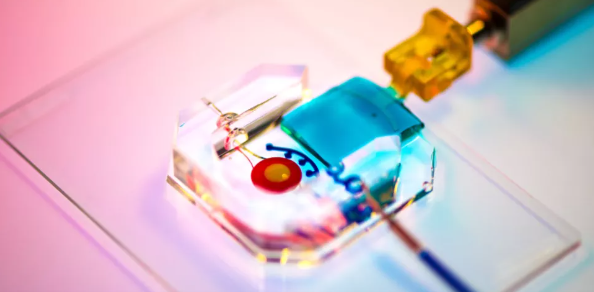Scientists have developed a tiny "organ on a chip" the size of a small coin that mimics early
In an article for the journal Nature Communicationsthe developers of the device described the new technology in detail. The small device is made of transparent silicone rubber. The same material used in some contact lenses. The device is equipped with two chambers: one for placental cells and the other for tiny three-dimensional blood vessels. The barrier runs between the two chambers and mimics the uterine tissue that passes under the embryo implanted in it.
 The "organ on a chip" is the size of a quarter. Image courtesy of Penn Medicine
The "organ on a chip" is the size of a quarter. Image courtesy of Penn Medicine
In the experiments, scientists used a deviceto observe how trophoblasts—cells that help the embryo attach to the uterus and then form part of the placenta—migrate to the organ's blood vessels before the embryo implants.
It turned out that the cells lining the blood vesselsthe vessels of the organ actually help the trophoblasts in their “mission,” as if “persuading” them. Thus, they turn on certain genes and secrete various proteins. With an “organ on a chip,” biologists were able to observe how this process occurs. The study also found that certain immune cells may play a key but unnoticed role in preparing the uterus for implantation.
Read more:
The main theory of the origin of man was refuted: where did we come from
Results of first cancer drug trial published
8 billion people now live on Earth: is overpopulation threatening the planet?